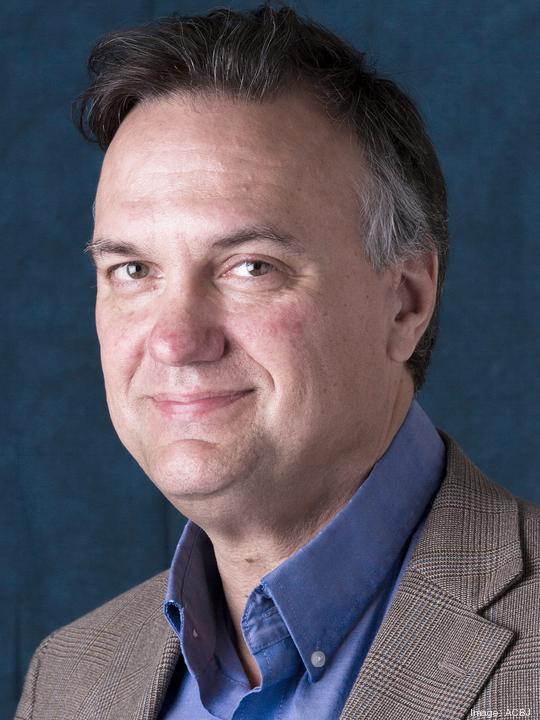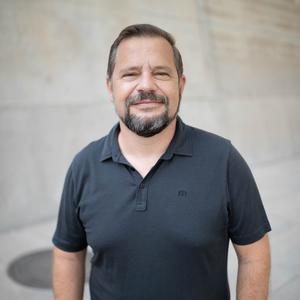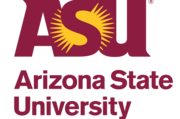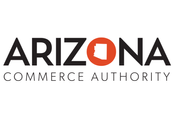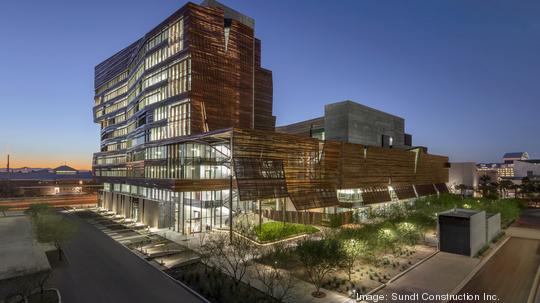
Our voices echoed in the empty ninth floor of a building newly constructed in the heart of downtown Phoenix. Defined and constrained by urban sprawl for so long, our desert home was finally condensing and creating the concentration of people and resources needed to become a leading tech hub — if we work together to seize this opportunity. The potential was visible in the panoramic view of the valley all around us. Cranes were lifting supplies to growing towers, and squatter four-story luxury condos were sprouting in what had been a parking lot. A half dozen other empty lots were waiting for what is next.
On the completed floors below, energetic researchers and passion-driven businesspeople were busy at glistening lab benches or in video-enabled meeting rooms, working to transform the latest genetic research into treatments that would save lives. The empty floors above were also waiting for what is next.
Both empty spaces, inside and out, would soon fill with intelligent, driven people who would figuratively and literally bump into one another in the growing center of biotech and spill into the already thriving arts district to the north.
From those windows, I could also see and feel how large and spread out our community is. The Phoenix metro area now has over five million people, but it is also the least densely populated major metro area. The open space, the sprawl, has always been our technology ecosystem’s biggest problem. With that much land, companies and their employees could always spread out.
Barriers to cooperation
However, that physical distance created barriers to cooperation, collaboration, and growth. Sprawl is what kept the cost of doing business down. It also kept us from achieving the critical mass of technology startups, established large companies, and concentrated capital that every other leading tech hub has.
Looking out that window, I was looking at the end of the problem. I saw the civic commitment and the infrastructure needed to create the concentration we have been missing. Projects like the Phoenix Biomedical Campus, Tempe Town Lake, and Scottsdale’s SkySong bring technology companies close enough to build genuine relationships and bonds. And yes, the pandemic showed that we could work remotely, but it also highlighted the importance of physical proximity to create connections. Humans need to spend time together to build strong relationships.
There has always been a significant amount of tech here — semiconductor manufacturing, aerospace, software, IT, and medical. Thriving, but only rarely connected. Technology Phoenix-style has been about driving to work at our various companies spread evenly across fourteen-and-half thousand square miles of desert. Once there, we do amazing things. Then we head home to equally dispersed suburban houses.
This recent shift towards concentration and collaboration is not only an opportunity to increase local wealth and bring life-improving technology to the world. In these early stages of change, it is also a chance to build a better community — a giving, empathetic, and engaged community outside of tech. We could create a community where success is measured by what you did for others along with the amount of money you raised.
New ideas, and purpose
The small group I was with became quiet as we soaked it all in. Thinking thoughts of growth and collaboration, I noticed the restored houses of the city’s early founders in Heritage Square, the homes of the pioneers who started everything spread out before us in squares a mile on each side. Those houses reminded me of the pioneer spirit that still makes Phoenix a unique place. The grid of evenly spaced streets recalled how they took the time to work together and plan for the future.
The new buildings will soon be here. It is up to members and leaders of our tech community to fill them with people, ideas and purpose. We need to take the time to build our networks, host meetings and use our newly engineered proximity to talk about what should be next.
This is also a chance to do things differently. We can bring our pioneering spirit with us and create a tech hub known for more than our business and technical abilities. We can build a community that is also known for our determination, hard work and cooperation. I saw the potential from the ninth floor of a new building. It is up to us to determine what we actually see from that window in the future.
Eric Miller is co-owner and principal of Tempe-based PADT Inc.
